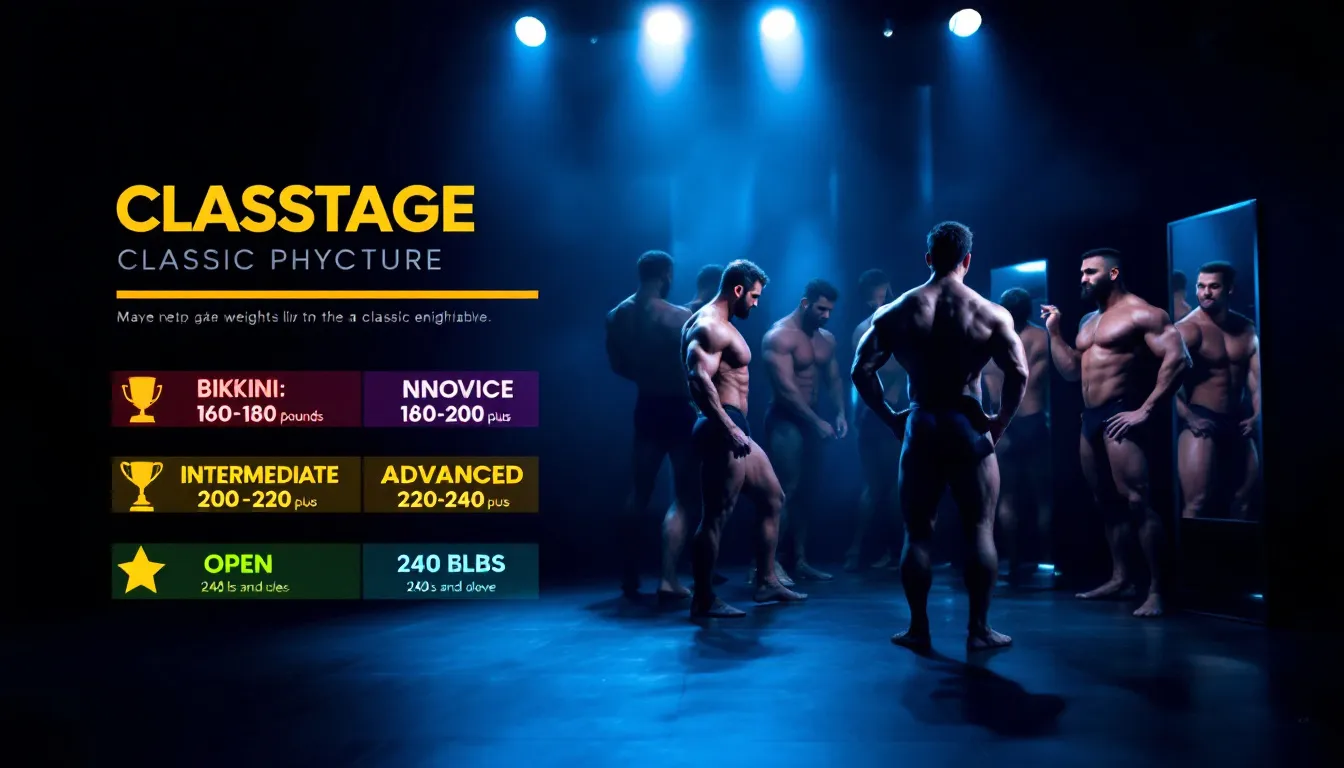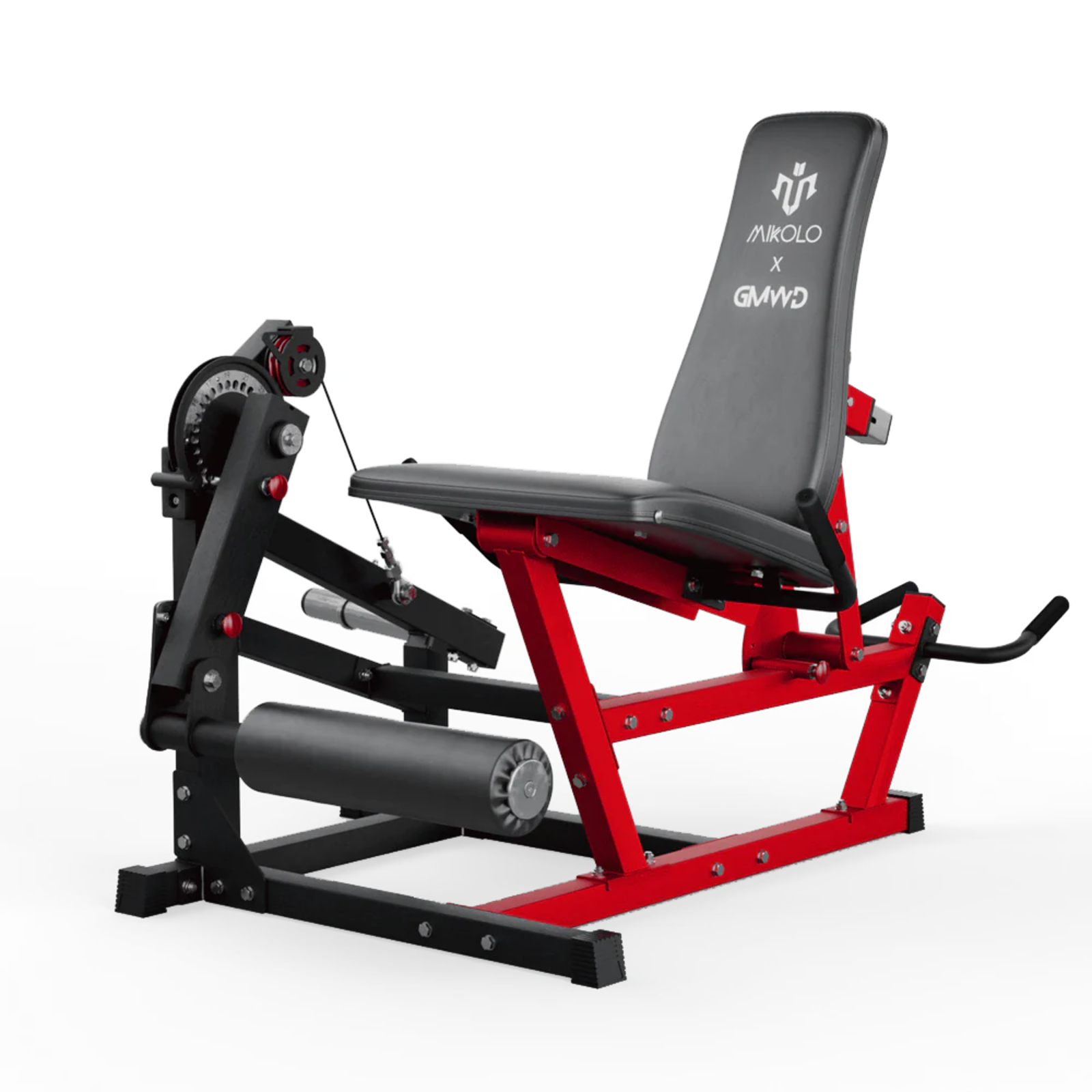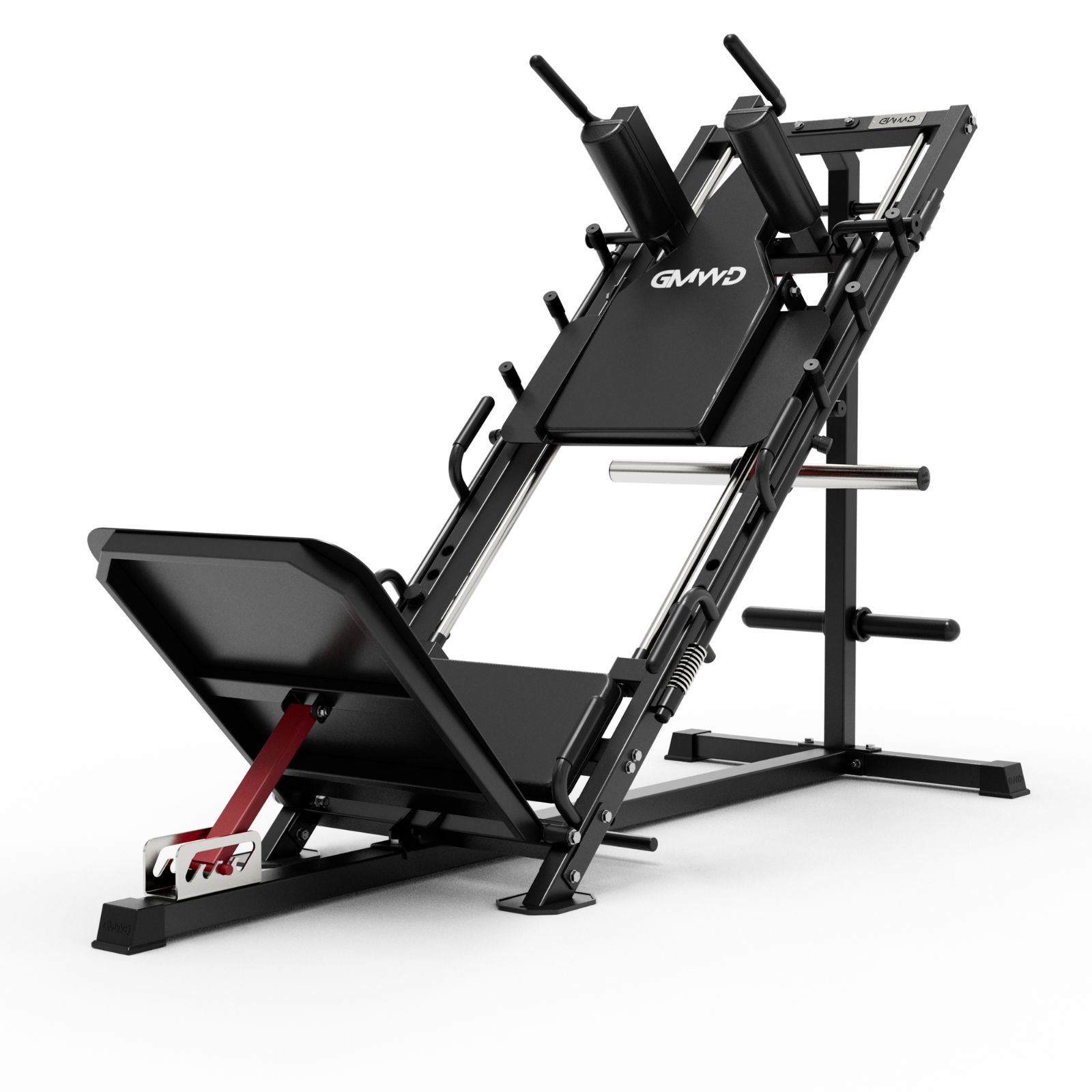Classic physique weight limits ensure fair competition by categorizing athletes into specific height and weight classes. This guide will explain these limits, their role in competitions, and how they impact athletes.
Key Takeaways
-
Classic Physique weight limits are established to ensure fair competition by categorizing athletes based on height and weight, promoting balanced physiques.
-
Competitors are divided into height and weight classes, which are enforced through weigh-ins, ensuring adherence to class requirements and maintaining competition integrity.
-
Judging in Classic Physique competitions emphasizes aesthetics, symmetry, and muscularity, with weight limits ensuring competitors are evaluated on proportionality rather than sheer size.
Understanding Classic Physique Weight Limits

In the realm of Classic Physique competitions, weight limits serve as the bedrock for fair play. Categorizing athletes based on their height and weight ensures that every competitor stands on an equal footing. This system is designed not only to level the playing field but to celebrate the blend of muscle mass, symmetry, and definition over sheer size.
These weight limits encourage competitors to develop physiques that are both balanced and visually appealing. It prevents taller athletes from leveraging their height advantage, ensuring that shorter competitors are not at a disadvantage. This approach fosters an environment where the beauty of proportion and the elegance of symmetry take center stage.
Height & Weight Classes Breakdown

Classic Physique competitions meticulously categorize competitors into different height and weight classes. This ensures that competitors are matched with others of similar build, promoting fair competition and consistent judging standards.
These classes are divided based on height ranges, with specific weight limits assigned to each class. Athletes compete against others who share their physical attributes, enhancing competition equity. Here’s a detailed breakdown of these classes.
Class A: ≤170.2 cm (including 172 lbs)
Class A is reserved for competitors who stand at or below 170.2 cm (5’7”). These athletes must not exceed 172 lbs, ensuring that their physiques remain within the ideal proportions for their height.
Class A exemplifies the essence of Classic Physique by balancing muscle mass and aesthetic appeal.
Class B: 170.3-177.8 cm (including 182 lbs)
Competitors in Class B range from just above 170.2 cm to a maximum of 177.8 cm (5’10”). The weight limit for this class is set at 182 lbs.
Class B bridges the gap between shorter and taller athletes, ensuring a level playing field.
Class C: 177.9-182.9 cm (including 194 lbs)
Class C includes competitors who are taller than 177.8 cm but do not exceed 182.9 cm (6’0”). The weight limit for this class is set at 194 lbs, allowing these athletes to showcase their physiques without compromising on balance.
Class D: >182.9 cm (including 217 lbs)
The tallest competitors fall into Class D, which includes those standing over 182.9 cm (6’0”). These athletes are allowed a maximum weight of 217 lbs, ensuring that their height does not give them an undue advantage over others.
International Requirements

The world of Classic Physique competitions is vast and varied, yet certain standards remain consistent across borders. The introduction of new height and weight categories in August 2023 has brought clearer distinctions among competitors, enhancing fairness and inclusivity.
Internationally, many bodybuilding organizations, including NPC Worldwide, adhere to standardized regulations for height and weight classes. These standards ensure athletes compete under similar conditions, regardless of the event location. Some international contests may have slight variations in weight class limits based on competitor height.
Competitors must adhere to the rules set by the IFBB Pro Professional League, including compliance with weight limits and event guidelines. These regulations are designed to maintain the integrity and consistency of competitions worldwide.
Weight Limits Enforcement

Weight limit enforcement is critical to ensuring fair competition. Event promoters establish specific weigh-in procedures to verify that competitors meet their designated weight class limits. Typically, weigh-ins occur before the competition, where athletes present themselves to officials for weight confirmation.
Failure to meet the weight requirements can result in disqualification, emphasizing rule adherence. Event promoters employ various strategies to uphold these limits, including regular weigh-ins and hydration assessments to ensure competitors are within their class requirements.
Additionally, secondary weigh-ins closer to competition time may be implemented to monitor weight and address any rapid weight loss practices among athletes. These measures ensure that all competitors are evaluated fairly, maintaining the sport’s integrity.
Impact on Judging
Weight limits play a pivotal role in judging Classic Physique competitions. These limits ensure competitors are evaluated primarily on aesthetics and proportion rather than size, maintaining the competition’s core principles. Judges assess competitors based on a combination of muscularity, symmetry, definition, and overall presentation.
The confirmation round allows judges to re-evaluate the top competitors, emphasizing symmetry and muscularity during final assessments. Event judges play a critical role in this process, evaluating participants against established criteria and ensuring a fair and transparent competition.
The head judge, along with the panel, has the sole and absolute discretion to determine the placements and recognitions, ensuring that the rules are upheld and the spirit of the competition is preserved. This ensures the emphasis remains on balanced, aesthetic physiques rather than pure muscle mass.
Preparing for Competition

Preparing for a Classic Physique competition involves more than just physical training. Competitors must learn effective weight management strategies to meet class requirements. This preparation ensures compliance with competition standards and the health and safety of athletes.
Effective preparation includes achieving the ideal weight, managing weight fluctuations, and perfecting the posing routine. These aspects are critical for presenting a polished physique on stage.
Achieving Ideal Weight
Reaching the ideal competition weight often requires dietary adjustments and structured meal plans. A calorie deficit method can effectively help competitors trim down to their target weight. Prioritizing protein intake is crucial for preserving muscle while losing fat, ensuring competitors maintain their hard-earned muscle mass.
A structured meal plan can help manage unexpected weight changes before competition, providing a stable and predictable approach to weight management. This preparation helps competitors stay within their weight class limits and present their best physique on stage.
Managing Weight Fluctuations
Managing weight fluctuations is a critical aspect of competition preparation. Strength training and cardiovascular exercises can aid competitors in reaching their ideal weight effectively. Resistance training combined with cardio helps maintain muscle mass while losing fat, ensuring a balanced physique.
Consistent meal timing and hydration can help reduce unexpected weight changes as the competition date approaches. This approach helps competitors stay within their weight limits and avoid last-minute surprises.
Posing Routine and Music Selection
A successful posing routine relies on both practiced movements and carefully selected posing music to create an impactful presentation. Competitors should practice their posing routine multiple times to ensure fluidity and confidence on stage. Choosing music that resonates with the competitor’s personality and complements their routine can enhance overall performance.
This preparation ensures competitors unequivocally agree to present their best selves during the competition.
Competitor's Responsibilities
Competitors bear significant responsibilities to ensure fair and safe competition. The recent adjustments to weight classes promote inclusivity, allowing competitors to present their physiques without unrealistic pressures. Regulatory bodies may impose penalties on athletes and trainers who violate weight-cutting protocols, ensuring compliance with established weight limits.
Failure to follow competition rules can lead to disqualification without refunds, emphasizing the importance of adherence to the above rules. Competitors are required to submit their contest contracts before specified deadlines to secure their place in the competition.
Event promoters should develop guidelines and checklists to ensure safe matchups that adhere to weight class standards, as an event promoter plays a crucial role in this process.
Summary
In conclusion, understanding and adhering to Classic Physique weight limits is crucial for fair and successful competition. These limits ensure that competitors are judged on aesthetics, symmetry, and proportion, maintaining the spirit of the competition. By categorizing athletes into height and weight classes, competitions are kept fair and equitable.
We encourage all competitors to focus on these principles and prepare diligently for their events. Adhering to weight management strategies, practicing posing routines, and following competition rules will ensure that competitors present their best selves on stage and contribute to the integrity of the sport.
Frequently Asked Questions
What are the weight limits for Class A competitors?** **?
Class A competitors are limited to a height of up to 170.2 cm (5'7") and a maximum weight of 172 lbs. It is essential to adhere to these specifications to ensure fair competition.
How are weight limits enforced in Classic Physique competitions?** **?
Weight limits in Classic Physique competitions are enforced through mandatory weigh-in procedures prior to the event. Competitors who do not meet the weight requirements risk disqualification.
Why are weight limits important in Classic Physique competitions?** **?
Weight limits in Classic Physique competitions are crucial for maintaining fairness and promoting aesthetic qualities, as they help level the playing field between competitors of different heights. This regulation emphasizes symmetry and definition over sheer muscle mass.
How do international requirements affect Classic Physique competitions?** **?
International requirements standardize height and weight class regulations in Classic Physique competitions, ensuring that athletes compete under uniform conditions and uphold the integrity of the sport globally. This consistency enhances fairness and prestige in the competitions.
What are the responsibilities of competitors in Classic Physique competitions?** **?
Competitors in Classic Physique competitions are responsible for adhering to weight class limits, submitting contest contracts punctually, and following all competition rules to avoid penalties or disqualification. Compliance with these responsibilities is essential for a fair and successful competition.










































Leave a comment
This site is protected by hCaptcha and the hCaptcha Privacy Policy and Terms of Service apply.